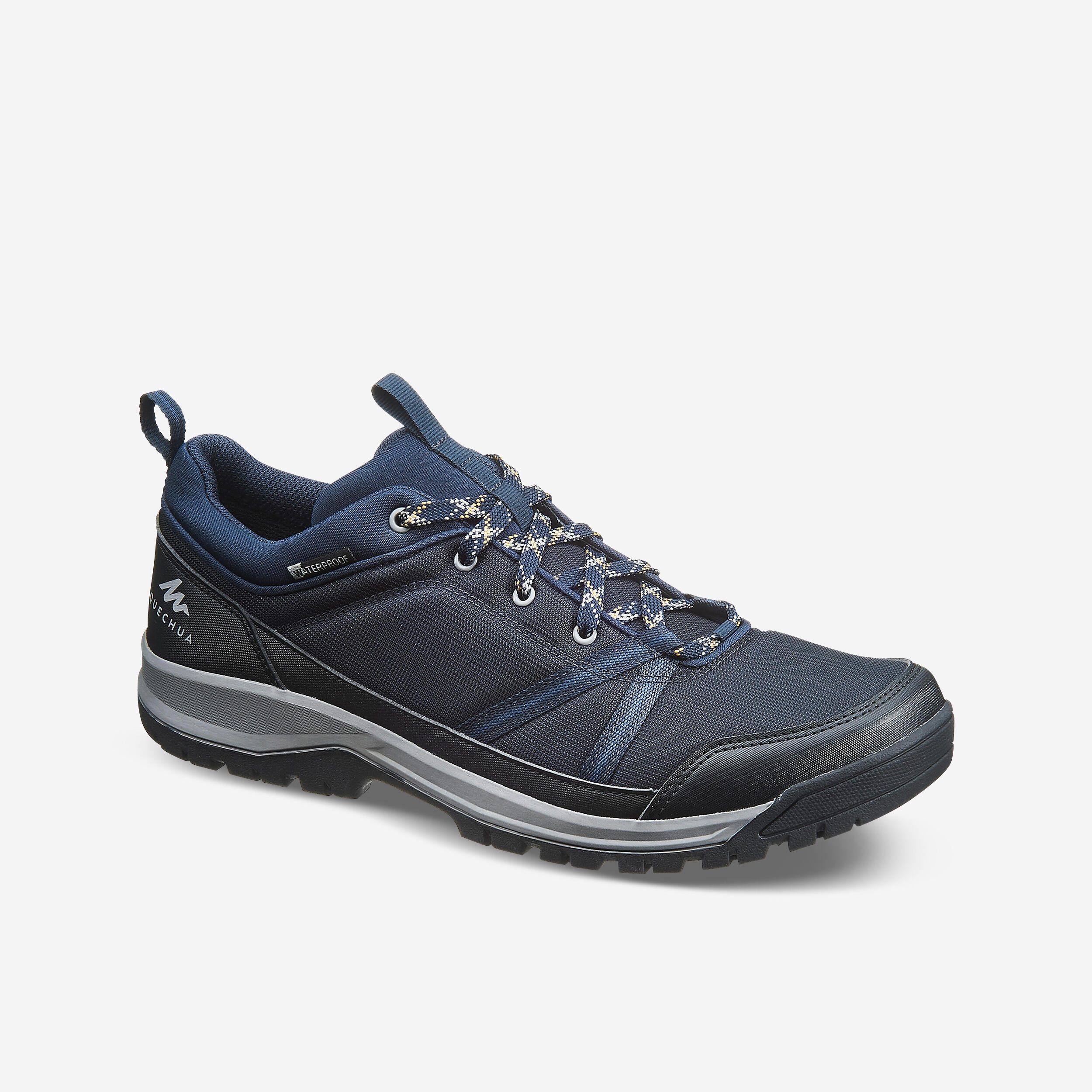





quechua
Men’s Waterproof Hiking Shoes NH150 WP blue
$45.00
Our hiker-designers have designed these NH150 WP waterproof shoes for your occasional hikes on the plains, in forests and along the coast in rainy weather Our best price for waterproof walking low-tops! They can withstand two hours of walking in light rain. The rubber sole offers maximum resistance and grip.
4.2/5
(44 )
5
25
4
11
3
3
2
3
1
2
80%
Wed, Apr 10, 2024
: 3 to 8 weeks
: [object Object]
Amazing
| Waterproof | 5 | |
| Cushioning | 5 | |
| Grip | 4 | |
| Value for money | 5 |
Thu, Feb 15, 2024
: 2 week or less
: [object Object]
WISH IT HAD S BETTER CUSHIONED SOLES
| Waterproof | 5 | |
| Cushioning | 2 | |
| Grip | 5 | |
| Value for money | 4 |
Tue, Oct 24, 2023
great walking shoe
Mario
: [object Object]
I lived in Ontario Canada and I was looking for a nice walking shoe since my old shoes died on me. my son had a pair of those shoes and I decide to try them. I am pleasantly surprise, comfortable and very good grip. as for the waterproofing I can not say much since I haven't b
een in heavy rain but now that fall is here I will be testing them. so far so good, i would purchase them again.
...| Grip | 5 | |
| Waterproof | 4 | |
| Cushioning | 5 |
Wed, Jul 12, 2023
good
Lichao
-
: 2 week or less
: [object Object]
good
| Grip | 5 | |
| Waterproof | 5 | |
| Cushioning | 5 |
Tue, Mar 05, 2024
Very comfortable
Alexandra
-
: 2 week or less
: [object Object]
Worn for first time today and found them very comfortable. Raining lightly but I’m sure they’ll stand up to heavy rain.
| Grip | 5 |
Thu, Feb 29, 2024
Excellent products!
Kirillĺ
-
: [object Object]
Excellent products!
Fri, Nov 10, 2023
Cheapest waterproof
Eddie
-
: 2 week or less
: [object Object]
It is the cheapest waterproof product line. Based on the price, waterproof it does the work, other than that, it is so so, cushioning not great, look is wrose. Initial grip on grass and mud is acceptable as it is new. let see how it go in this aut/winter. If you can afford bet
ter or need it in tough terrain (cannot change shoe in the mountain), please go for better choice.
...| Waterproof | 4 | |
| Cushioning | 2 | |
| Grip | 2 |
Wed, Sep 06, 2023
2nd pair of these, 1st were waterproof, 2nd not
Paul
: 3 to 8 weeks
: [object Object]
Bought a 2nd pair of these 16th May after the first lasted a few years, most of which waterproof. Sorry to say, they must have lowered the spec, as this pair are not waterproof in the slightest. I end up with soaking socks after a few minutes just walking on wet grass. Not
impressed, but having had them a few months probably nothing can be done. Also find the soul not to be as cushioned as the last pair, and the grip not so good on smooth wet surfaces, like rocks.
...| Cushioning | 3 | |
| Grip | 3 | |
| Waterproof | 1 |
Wed, Aug 09, 2023
As expected
Steve
-
: 3 to 8 weeks
: [object Object]
Not much more to say other than perfect for the casual walker
| Cushioning | 4 | |
| Waterproof | 5 | |
| Grip | 5 |
Fri, Jun 23, 2023
Premium Waterproof Shoes
Kenny
: 4 to 6 months
: [object Object]
The product is good, and its waterproof shoes are suitable for long durations of walking outdoors. The quality is also excellent.